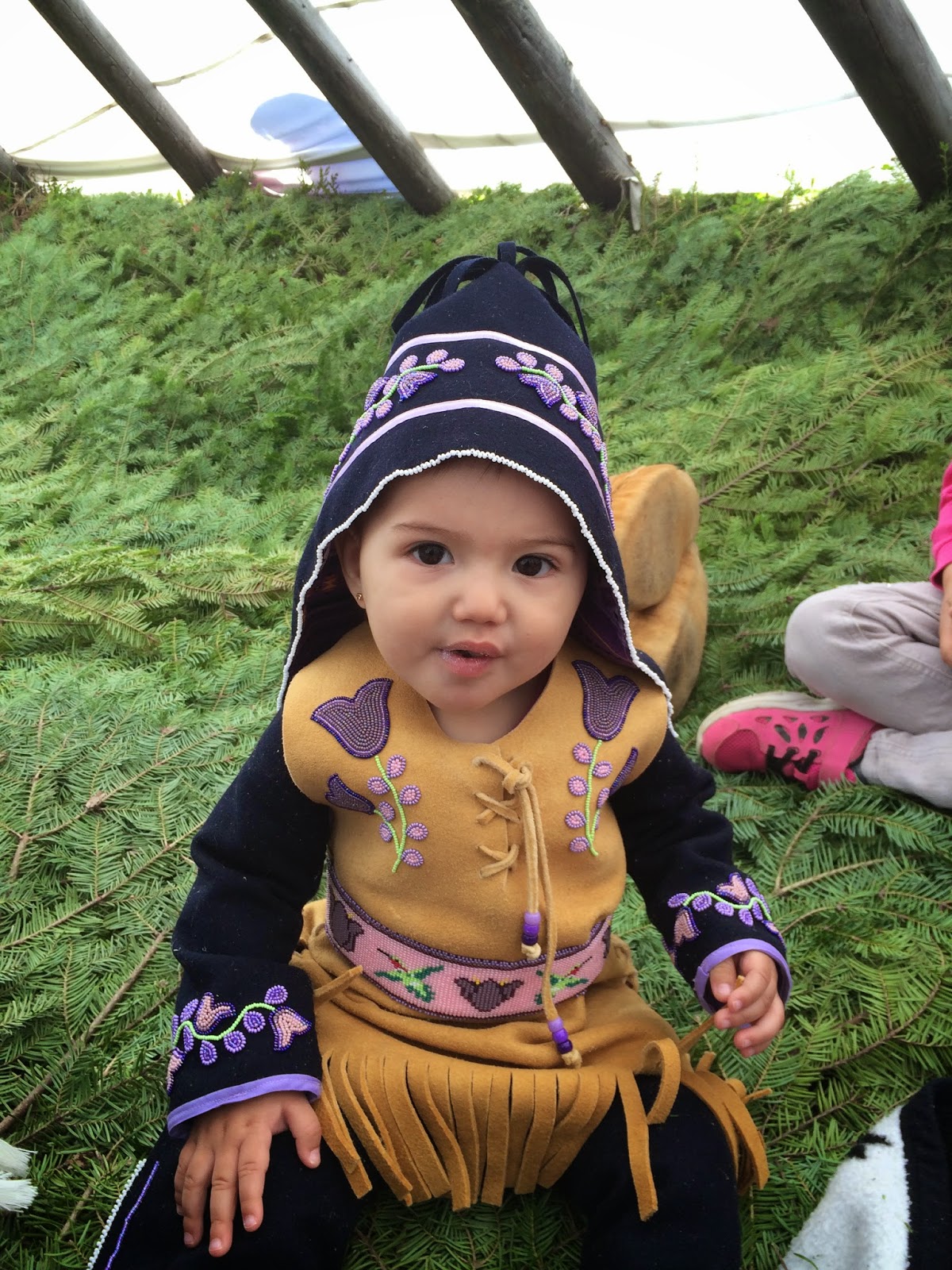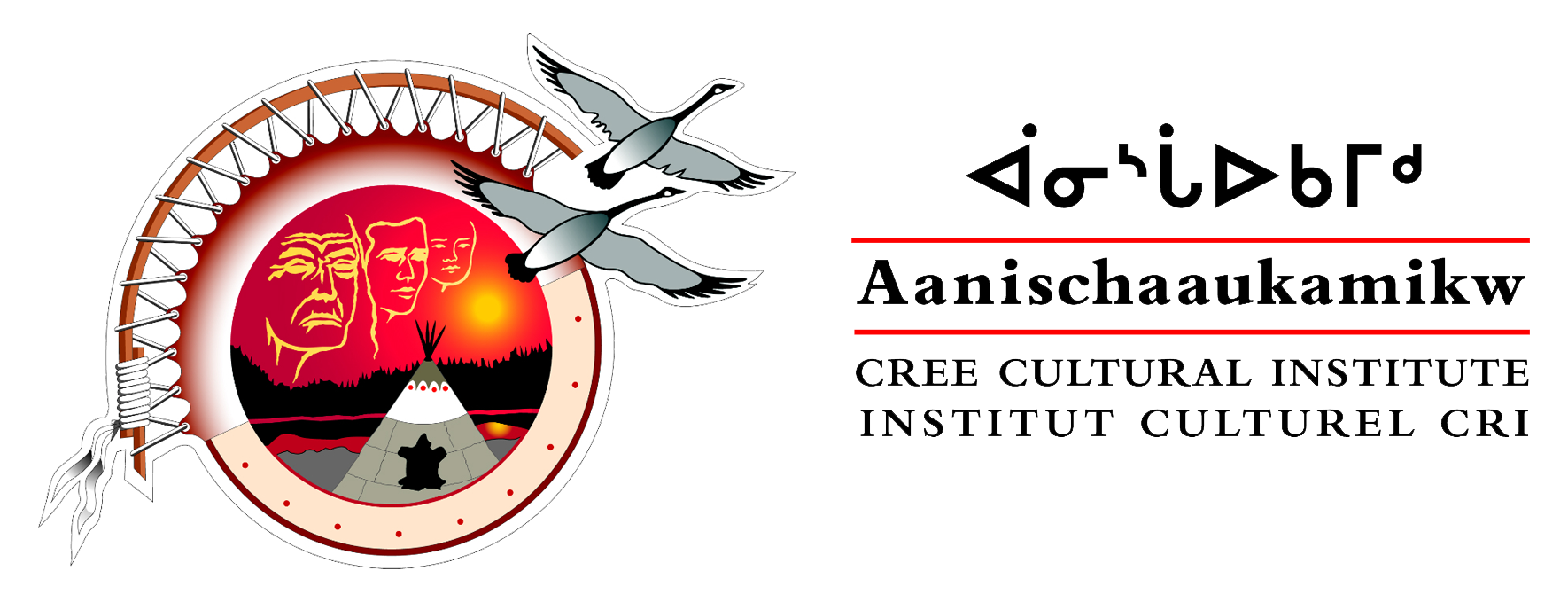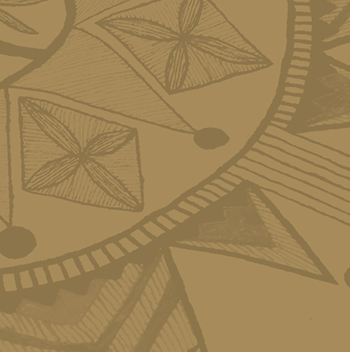
The walking out ceremony is a Cree
tradition that has been done for children for hundreds of years. When a child
was born, they were not allowed to touch the ground until they went through
this ceremony. The parents took great care of keeping them off the ground. The
ceremony can be done for a child or many children at the same time. Once the
child is of age to walk or is close to the age of walking the ceremony is done
for them during the spring. The child is dressed in traditional clothing of his
or her gender and given miniature tools that each gender would use as a woman
or man out in their hunting grounds. They are also being introduced to the land
and their roles they will do in the future as their ancestors have done before
them. The child is walked around the front of the lodge, teepee or shaptuaan.
As they walk around they demonstrate a role they would do, for example the
women display gathering wood or the men hunting. They re-enter the lodge and
bring gifts to the elder that the child carries in his bag. Then the child is
greeted by everyone with hugs and kisses. The ceremony is followed by a feast
to honour the child/children. It is a beautiful and heart felt ceremony.
Albert St-Pierre and Sabrina Bouchard asked
me to make them a walking out ceremony outfit for their daughter Adelyna. She
would be having her ceremony at the end of May. At first, I was hesitant to
accept because I had already had a long list of sewing orders from many other
people. I accepted their request because there was something very special about
Adelyna. I just felt I had to make it for her.
I asked Sabrina what kind of outfit she
wanted me to make. She did not have anything specific in mind but trusted me as
an artist to make something beautiful for her daughter. Since October 2013 I
have been working at the Aanischaaukamikw Cree Cultural Institute as an
education consultant. Over this time I have had time to do some research on
traditional James Bay Cree clothing dating from 1600-1800’s. I offered to make
an 1800’s style outfit the women would wear on special ceremonies, including
the beaded hood, separate sleeves, hide dress and leggings. She agreed with
this style but absolutely insisted on having the colour purple in it. No
problem! As I have learned through anthropological papers and the Elders of
Eeyou Istchee, each of these traditional clothing pieces has deep significance.
For example, the women’s leggings had a side flap, embellished with beadwork or
ribbon work. The pattern has a story of origin. Long ago the women’s leggings
were cut out with a curve at the bottom and the men’s were cut out into a
point. The point of the legging represents the hoof of a caribou. This design was
to please and help ‘Pikuutskaw’, the Woman of the Land’, and the spiritual caretaker
of all animals and the hunt. The cut of the leggings helped her differentiate from
woman to hunter. If Pikuutskaw saw the point of the male leggings she would
send game to the hunter so he could bring food to feed his family. With what I
have learned I was careful to stay close to the traditional patterns and honour
their symbolic meaning.

The first step was to get the measurements
right and make the pattern. I used an old newspaper left in the museum. Adelyna
didn’t cry or fuss as I wrapped the paper around her legs, body and arms. As I
was measuring her, in the blink of an eye I could see the whole outfit and how
to design it. Right then I knew it would turn out great and everything would fall
into place. Although I had already drawn up some floral designs, there was one
pattern that spoke to me. It was a floral design representing a purple flower
that grows along the James Bay coast near my community of Chisasibi. This
beautiful flower reminded me of Adelyna’s sweet humor and softness. I also wanted
to do something with birds so I put in a hummingbird because her family comes
from the south. Hues of purples and pinks raced my mind. I tried to explain to
Sabrina the designs and motifs I drew out of the paper. She must have thought I
had gone a bit crazy as I tried to convince her how beautiful the outfit would
be! She put her trust in me and we went our separate ways.
For a month straight I sowed. There were
many long hours of beadwork – early mornings and late nights. Throughout the
project I always referred to the pictures of traditional Cree clothing and did
my best to stick to the traditional patterns. I felt so inspired. People have
asked me if I ever got tired of working on it. Never! Not even once! I cherish
all my work that I create and make it as beautiful as I can. I do these things
as though I am making it for myself. It was so precious and sweet. Whenever I finished
a piece I would show Adelyna’s parents. They loved it as much as I did.
In the late night before the ceremony I had
finally finished the outfit! I barely sleep. We were all excited for the
ceremony. The following morning we were blessed with a beautiful sunrise and nice
weather. Adelyna did not cry of fuss as she was dressed in her outfit. She was
glowing with beauty! She shared her walking out with three other children. When
it came her turn to walk out the shaptuaan escorted by her parents, she was
smiling. Her first steps on Mother Earth. She was smiling and giggling and
making cute faces to the familiar faces in the crowd. She watched closely as
her father showed her the woman’s traditional role of gathering wood and
picking bows for the lodge. As he finished she smiled and started baby talking
to the crowd! It was beautiful to see. Adelyna had a wonderful day! She was so
happy to walk freely on Mother Earth. She had truly given me a great honour of
making her outfit and sharing her walking out ceremony with the community of
Ouje-Bougoumou and myself.
I believe this traditional outfit has
opened a doorway to the past of our ancestors. I have heard of beaded hoods
being brought back in my community of Chisasibi and Whapmagoostui and used in
traditional ceremonies. There is also a full woman’s 1800’s style outfit from
the late Mina Tapiatic in Chisasibi. She remembered the woman’s outfit through
stories her grandmother had told her. She instructed her daughter to make one
for her and wore the outfit during special events or ceremonies. Today the
outfit is with her daughter Lily Tapiatic. I have visited many Elders in
Chisasibi who have guided me in my sewing and traditional knowledge. I might be
the first person to bring back the woman’s outfit in a miniature size for a
walking out ceremony. It represents our history and acknowledges the women of
Eeyou Istchee.
Walking Out ceremonies are fun to watch and
it is sweet to see young children dressed up and being made to play out adult
roles. But our Elders tell us that there is a serious side to the ceremony. The
spectators are not just there to take pictures of cute children and enjoy a
delicious feast. Being invited to the ceremony and witnessing children take
their first steps on Mother Earth means you are being asked to play a positive
role and be a good influence in their lives. It’s a lot like the African
proverb, “It takes a village to raise a child.” Everyone plays an important
part in helping the next generation grow up well and become responsible adults.




